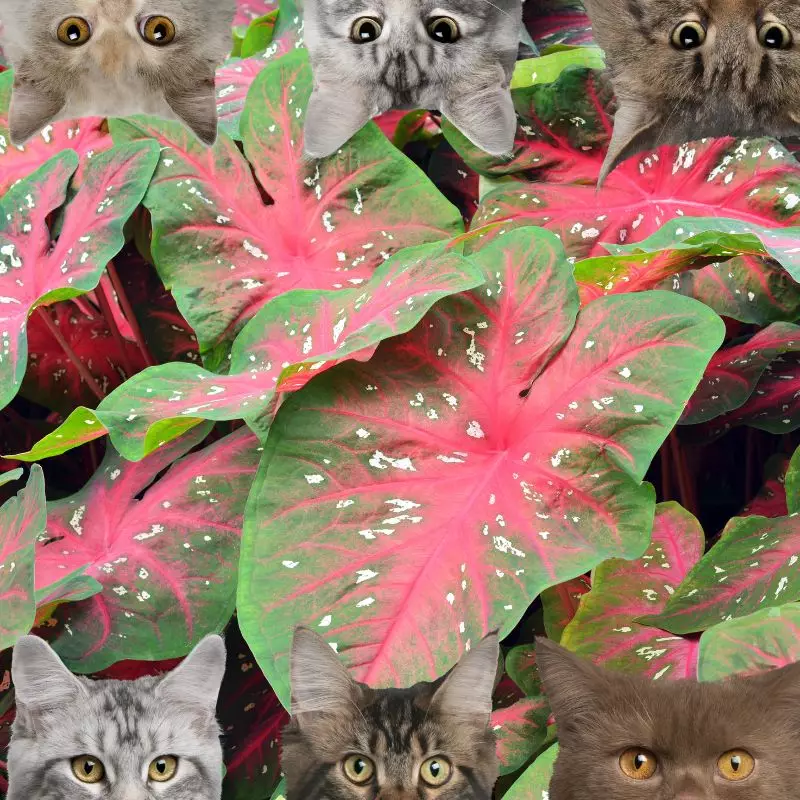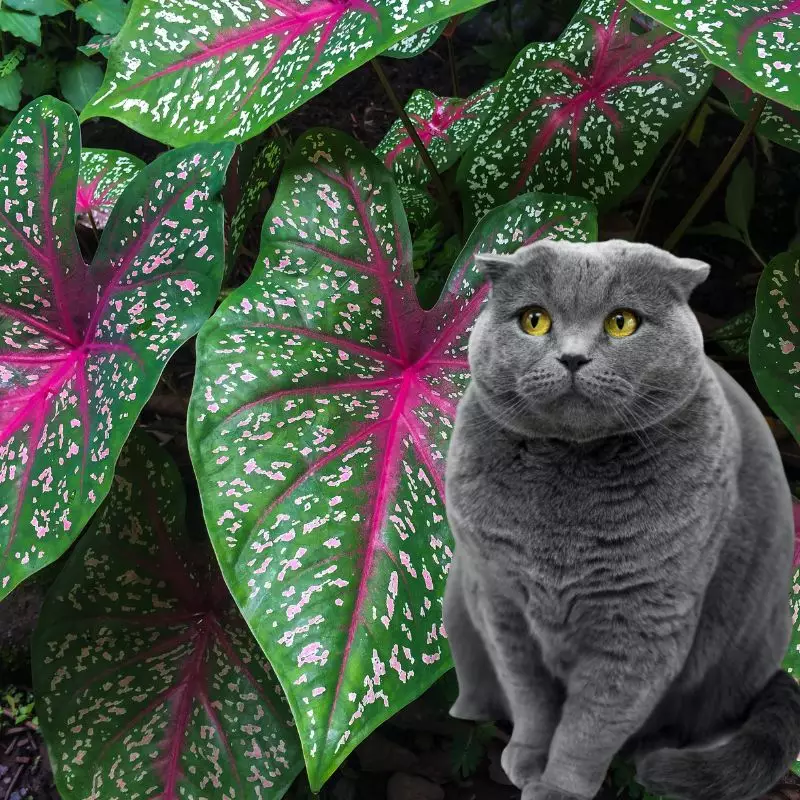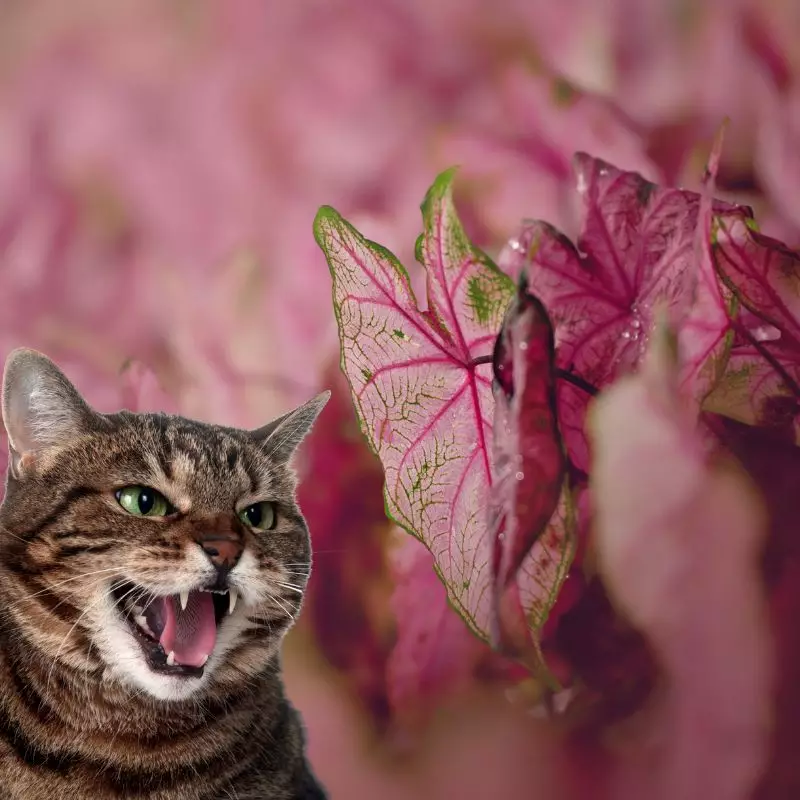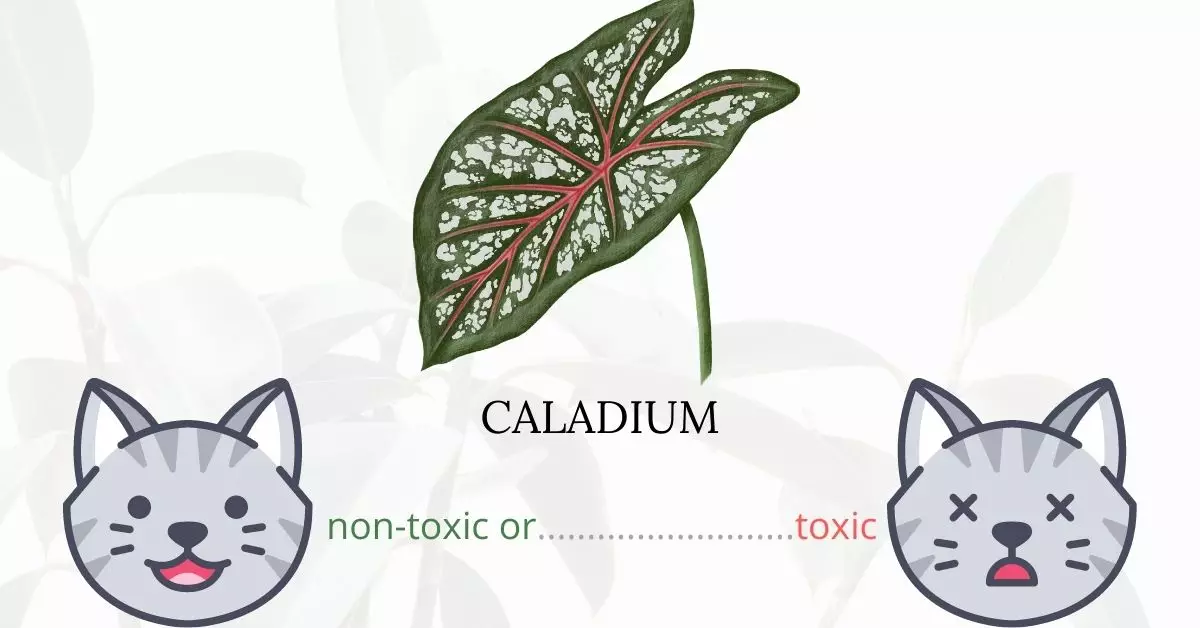Yes, Caladium is toxic to cats. Commonly known by various names such as Malanga, Elephant’s Ears, Stoplight, Seagull, Mother-in-law Plant, Pink Cloud, Texas Wonder, Angel-Wings, Exposition, and Candidum, Caladium contains insoluble calcium oxalate crystals. When a cat chews or bites any part of this plant, these crystals are released, causing tissue penetration and irritation to the mouth.
This article was crafted in collaboration with a team of experienced DVMs (doctors of veterinary medicine). Their expertise has greatly enriched our understanding, ensuring that we present accurate and up-to-date information on the potential risks various plants pose to cats, with a focus on Caladium in this instance. Furthermore, we have also referenced high-authority websites like ASPCA and PetMD to provide the most comprehensive information on every plant we discuss.
Clinical Signs of Caladium Poisoning in Cats

When cats come into contact with, smell, or ingest the Caladium plant, they may exhibit various symptoms resulting from its toxic components. The Caladium plant contains insoluble calcium oxalate crystals and potentially harmful oils. Even mere exposure to these elements or getting pierced by the plant’s thorns can induce symptoms of Caladium poisoning. These symptoms can manifest immediately or may take up to two hours post-exposure. They can be persistent, lasting for up to two weeks. Here’s a breakdown of these clinical signs and the reasons behind them:
- Eye irritation and Eye pain: The plant’s oils or the released oxalate crystals can irritate the sensitive tissues of a cat’s eyes.
- Inflammation of the skin: Skin contact with Caladium can cause a localized allergic reaction due to its irritant compounds.
- Abdominal pain and Nausea: Ingesting Caladium can upset the feline gastrointestinal system, causing discomfort.
- Delirium: A cat may experience disorientation due to the overall toxic effects on the body.
- Diarrhea and Vomiting: These are the body’s natural reactions to expel toxic substances ingested.
- Difficulty in breathing and swallowing: The swelling and irritation caused by the plant can obstruct the airway and make swallowing painful.
- Lack of appetite: The pain and discomfort from ingestion can deter the cat from eating.
- Lip swelling, Swelling of the tongue and mouth: The oxalate crystals can cause significant tissue irritation and inflammation.
- Mouth pain, Numb mouth, and Mouth ulcers: The penetration of calcium oxalate crystals in the oral tissues can cause pain, ulcers, and numbness.
- Salivation: Increased saliva production is a response to oral irritation.
- Sore throat: Swelling and irritation can extend to the throat, causing discomfort.
Always consult with a veterinarian if you suspect your cat has been exposed to or ingested Caladium.
First Aid and Treatment of Caladium Poisoning in Cats

The veterinarian will most likely administer IV fluids to flush the toxins from your cat’s system. Antiemetics may be also given through your cat’s IV to control his or her vomiting. Oher treatment and medication may be also provided by the vet depending on your cat’s ailment.
Recovery from Caladium Poisoning in Cats

The cat will recover completely in the majority of cases within 12 to 24 hours of consumption. In extreme situations of gastrointestinal disturbance, such as continuous vomiting and diarrhea, the cat may need to be admitted to the veterinary facility and thoroughly watched. Once your cat is discharged, ask the veterinarian for supportive and preventive care measures that you should do for your cat to recuperate quickly and avoid recurrence of plant poisoning.
Prevention of Caladium Poisoning in Cats
Once you are sure that you do not have any growing caladiums in your yard and inside your home, check your neighborhood if there are sightings of this plant. Restrict your cat from going outdoors by keeping him or her busy inside your house. If necessary, build additional safety fences and nets around your house.
If you love plants but have cats at home, check out these lists:





